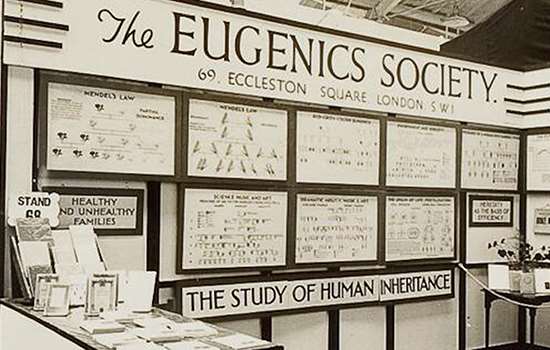KEYNES, John Maynard (1883-1946)
Plaque erected in 1975 by Greater London Council at 46 Gordon Square, Bloomsbury, London, WC1H 0PD, London Borough of Camden
All images © English Heritage
Profession
Economist
Category
Economics and Statistics
Inscription
JOHN MAYNARD KEYNES 1883-1946 Economist lived here 1916-1946
Material
Ceramic
Notes
There is also a plaque to Vanessa Bell and Duncan Grant at this address.
Arguably the most influential economist since Adam Smith, John Maynard Keynes is remembered for the system of deficit finance that bears his name – Keynesianism – as described in his best-known book, The General Theory of Employment, Interest and Money (1936). While living at 46 Gordon Square he was a prominent member of the Bloomsbury Group.
THE BLOOMSBURY GROUP
Keynes moved to 46 Gordon Square in Bloomsbury in 1916 as a tenant of the art critic Clive Bell (1881–1964) and his wife, the artist Vanessa Bell (1879–1961). Earlier, the house had been occupied by Vanessa and her siblings, who included Virginia Woolf. Like them, Keynes belonged to the Bloomsbury Group. According to his biographer, ‘most of the practical arrangements for Bloomsbury’s collective London life were concentrated in his hands’.
Clive Bell called the house the group’s ‘monument historique’, and its several Bloomsbury connections led to consideration being given to commemorate the group as a whole. However, unlike the Pre-Raphaelites, they were considered too amorphous a collection to merit such treatment.
LIFE AT NUMBER 46
Keynes took over the lease of number 46 in 1918, and remained at the house until his death. Clive Bell kept a pied-à-terre here until 1924, and their periods of cohabitation were occasionally fractious: one unedifying dispute about an uncomfortable bed ended with Bell suggesting – in unvarnished language – that Keynes ought to take it because he was the less sexually active.
Keynes worked for the Treasury during the early part of his time at Gordon Square before becoming, in 1924, Bursar of King’s College, Cambridge. His wife, the ballet dancer Lydia Vasilievna Lopokova (1892–1981), remained at the address until 1948, and the plaque was put up in 1975.
Nearby Blue Plaques
More about blue plaques
-

Eugenics in Britain
Find out more about the controversial and changing ideas about eugenics, and some of the figures with blue plaques who supported or opposed it.
-

Support the blue plaques scheme
Every blue plaque, from its research to unveiling, is funded by donations. Find out how you can help support the scheme.
-

Search for a Plaque
Use our search function to look for someone from history, or browse by category or location.